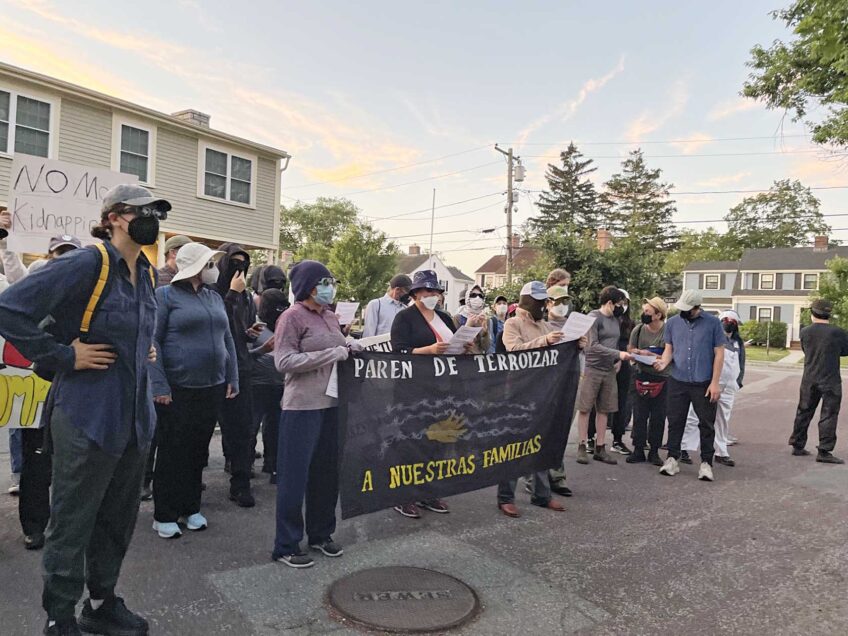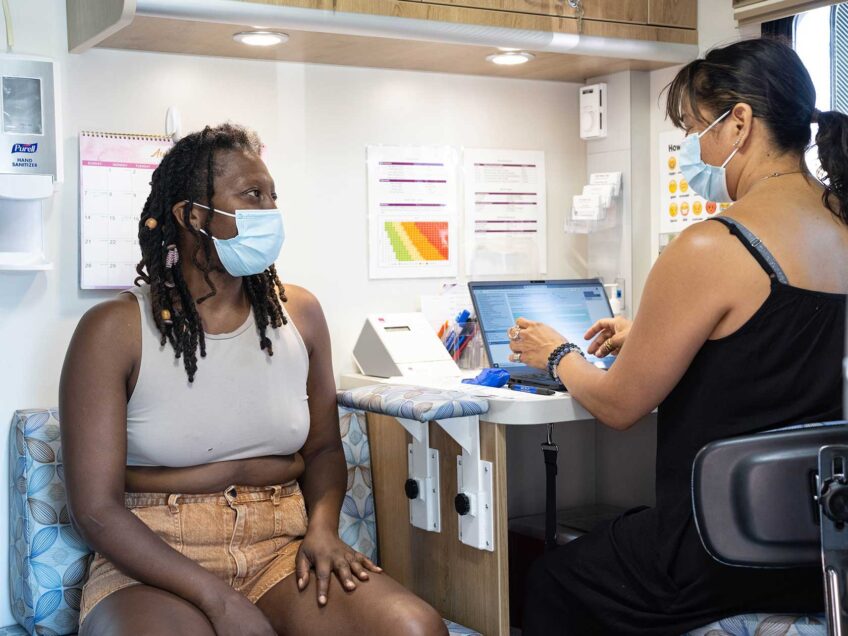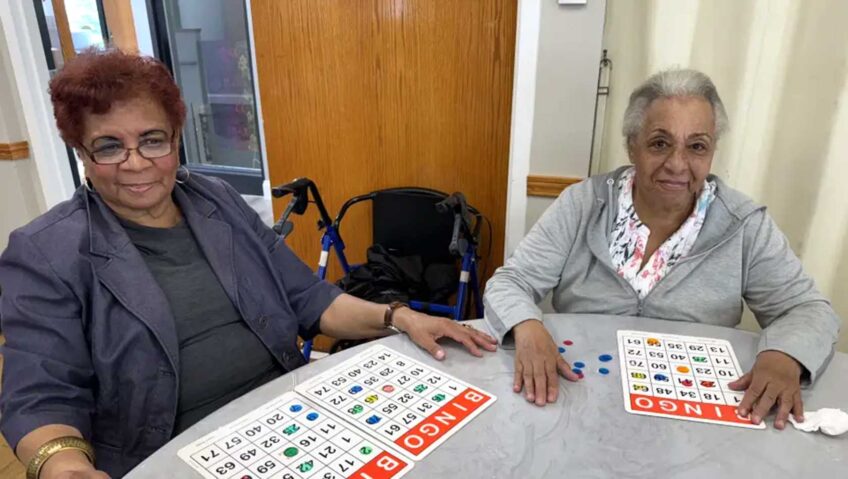Maria Louise Baldwin: An eminent educator, civic leader, speaker
Black History
Miss Maria Louise Baldwin was a gifted speaker, a civic leader and one of the nation’s most eminent African American educators. The daughter of Peter L. and Mary E. Baldwin, she was born on Sept. 13, 1856 in Cambridge, Mass. There, she attended the Sargent Primary and Allston Grammar schools. She graduated from Cambridge High School in 1874 and from Cambridge Teachers’ Training School the following year.
Baldwin wrote to then-Cambridge School Board member Horace E. Scudder, asking him to help her secure a teaching position. Scudder told her, however, that it seemed to him that it was clearly her duty to go south and work for those with more limited educational opportunities. Unable to land a teaching job in Cambridge, she headed south for Chestertown, Md., where she taught for two years.
But Baldwin did not give up the hope that she might one day obtain a teaching post in Cambridge. After discussing the matter with several people, she became convinced that there was work to be done in New England — living down race prejudice and demonstrating that black women could perform good and worthy work wherever they might cast their lot.
Perhaps caving in to pressure applied by the African American community, in 1882 the Cambridge School Department hired Baldwin as a teacher at the Agassiz School, making her the only black public school teacher in Cambridge. The Agassiz School was a primary grade school then located on the corner of Sacramento and Oxford streets. Baldwin soon ranked high among the teachers in the city, thanks to her exceptional ability.
She was appointed principal of the Agassiz School in 1889 — and then master — becoming one of just two women in the Cambridge Public Schools and the only African American in New England to hold such a post. She supervised an all-white staff of 12 teachers, who were responsible for approximately 500 students, 98 percent of them white. A black “master” of a white school was considered unheard of at that time.
Baldwin took courses at Harvard and other institutions to stay abreast of the latest developments in her field. During the summer, she taught courses to African American student-teachers at Hampton Institute in Virginia and the Institute for Colored Youth — an all-black teacher’s college in Cheyney, Penn.
She served at the Agassiz School faithfully for 40 years. Among her accomplishments were organizing the first parent-teacher group in the Cambridge Public Schools, introducing novel ways of teaching mathematics and inspiring the creation of a museum of science program within the school system. Under her direction, the Agassiz School became the only public school in Cambridge to create an “open-air” classroom. She also introduced the practice of hiring school nurses.
Baldwin was a talented speaker. According to one observer, “with rare ability” she delivered a lecture titled, “Woman’s Share in the Race’s Work,” at an event held at the Charles Street A.M.E. Church on June 26, 1888. She impressed a Boston Globe reporter in August of 1897, “as being a very cultivated woman, most pleasing in manner” and a person who spoke interestingly on “almost any subject except herself,” for she was “very modest and unassuming.”
Another reporter similarly noted, “Personally, Miss Baldwin is charming, and upon almost any topic converses most interestingly, in the rich, low voice, carefully enunciated and well-chosen words of a New England woman of the best type.”
She won praises all over the country for her lecture on the life of Harriet Beecher Stowe and presented lectures on presidents Washington, Jefferson and Lincoln as well. Baldwin often gave readings from the works of African American poet, novelist and playwright Paul Lawrence Dunbar. Her home at 196 Prospect St. became the center for various literary activities. There she held weekly readings for African American students attending Harvard.
Baldwin was one of the speakers at the 35th annual banquet of the New England and Massachusetts Women’s Suffrage Association, held at Faneuil Hall on the night of May 22, 1901. Nearly 400 members and guests attended the event, including representatives of the Massachusetts legislature.
According to the Globe, she made “one of the best speeches of the evening on ‘The Teacher in Social Reform.’” Baldwin told the audience that a “teacher’s work was more sacred than that of a minister,” and that “children should always be given the closest attention by teachers because of the latent possibilities in their young lives.”
On Oct. 26, 1901, Baldwin offered the Massachusetts Federation of Women’s Clubs, at its meeting in Springfield, Mass., a “teacher’s point of view.” “Anyone who spends a long time in the work of teaching realizes that, noble as the task is, it holds peculiar temptations, subtle influences that make for narrowness of view, for a kind of mental fixedness and for a loss of enthusiasm,” the educator said. “We teachers see our work and ourselves . . . very large” and “are apt to consider that work . . . quite detached from the greater social ends it is designed to serve,” Baldwin added.
She was pleased that efforts were being made to bring the public schools and the community into cooperation and thought that the “pleasant overtures that club women” had made to teachers had “certainly been for the teacher’s good.”
Concerned about the welfare of black Southerners, Baldwin spoke at a mass meeting at Chickering Hall on May 20, 1899, organized by leading women of Boston to protest “the barbarism of lynching.” Other speakers at the event included: Julia Ward Howe, Edna Dow Cheney, Florida Ruffin Ridley, Mary A. Livermore, Alice Freeman Palmer, Mary Clement Leavitt and Mrs. Edwin D. Mead. About 300 people, mostly women, attended the gathering.
Baldwin volunteered her time raising money for the education of African American children and young adults. On March 27, 1900, at the Madison Square Garden Concert Hall, she and black intellectual W. E. B. Du Bois addressed a meeting to raise funds for a free kindergarten for African American children in New York City.
She served on a planning committee that held an “April Festival” in Boston on April 19, 1901, the proceeds of which provided aid to a kindergarten for black children in Atlanta, Ga., Journalist Josephine St. Pierre Ruffin, her daughter Florida R. Ridley and teacher Harriet L. Smith served on the committee as well. More than 100 black children participated in the festival, which took place in the parlors of the Young Men’s Educational Aid Association.
In aid of Atlanta University, Maria Baldwin and other respected Bostonians issued a written appeal for $10,000, published in The New York Times on June 22, 1903. While Baldwin and the other signatories to the appeal appreciated the value of industrial training, they insisted that more black men and women with intellectual, as well as practical, equipment serve as educators to the ignorant and less fortunate of the race.
“However skillful a colored man may be as a carpenter or a mason, the mere knowledge of a mechanical trade does not fit him for the profession of school teaching,” they wrote. “White teachers in the South are mainly confined to the instruction of white children; and, if the emancipated race is to be adequately reached, colored instructors must be specially educated for the purpose,” they noted.
Baldwin belonged to many social and literary clubs, including the Twentieth Century Club, the Cantabrigia Club and the Banneker Club. She was also a member of the “Omar Circle,” a small group of black intellectuals. In 1897, she and Booker T. Washington were elected honorary members of the Brooklyn Institute of Arts and Sciences.
Maria Baldwin held leadership positions in a number of civic and educational organizations. Not only did she help Josephine St. Pierre Ruffin establish the Woman’s Era Club — a group comprised chiefly of prominent black women who dedicated their efforts to cultural enrichment, charitable work and women’s suffrage — but on Jan. 17, 1894, she became the club’s vice president. With a membership varying from roughly 75 to 105 women, the club met once or twice a month for tea and waffles at Ruffin’s home, 103 Charles St., and the members discussed the burning issues of the day. The Woman’s Era Club took the motto “Help to Make the World Better.”
Baldwin was elected assistant secretary of the Massachusetts Teachers Association on Dec. 1, 1900 and, in fact, delivered one of the addresses at its 59th annual meeting on Nov. 27, 1903. She became the second president of the Boston Literary and Historical Society on March 9, 1903. Boston Guardian editor William Monroe Trotter established the society in 1901 “to promote the intellectual life of the community.”
The educator was the first president of the League of Women for Community Service (LWCS), headquartered at 558 Massachusetts Ave. in Boston. Formerly the Soldier’s Comfort Unit, “558,” as it is also known, was founded by a group of respected black women in 1918 to undertake civic, social, educational, and charitable work for the benefit of the community. Baldwin remained president of the league until she died.
Suddenly stricken by heart disease, Maria Louise Baldwin passed away on Jan. 9, 1922, while addressing a meeting of the Robert Gould Shaw Association at the Copley Plaza Hotel. Eulogizing the eminent educator, a reporter for the Globe described her as “one of the foremost Negro workers on behalf of her race.” In her honor, the LWCS dedicated the Maria L. Baldwin Memorial Library on Dec. 20, 1923.
In the early 1950s, American poet and author e. e. cummings, a graduate of the Agassiz School, wrote, “Miss Baldwin, the dark lady . . . (and a lady if ever a lady existed) was blessed with a delicious voice, charming manners and a deep understanding of children. Never did any semi-divine dictator more gracefully and easily rule a more unruly and less graceful populace.” He added, “Her presence emanated an honor and a glory: the honor of spiritual freedom — no mere freedom from — and the glory of being, not (like most extant mortals) really undead, but actually alive.” From her, the poet “learned that the truest power is gentleness.”
On May 21, 2002, the Cambridge School Committee voted unanimously to rename the Agassiz School the Maria L. Baldwin School. It was officially renamed on Feb. 12, 2004.






